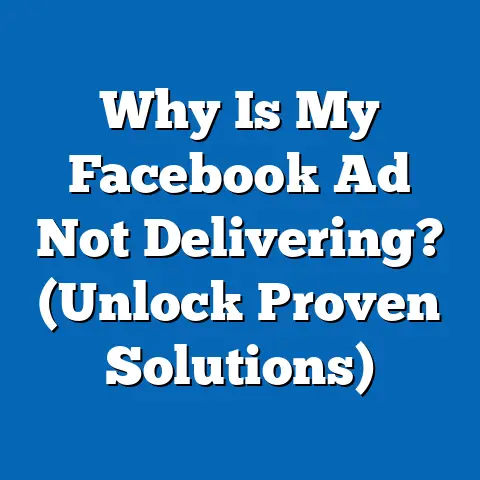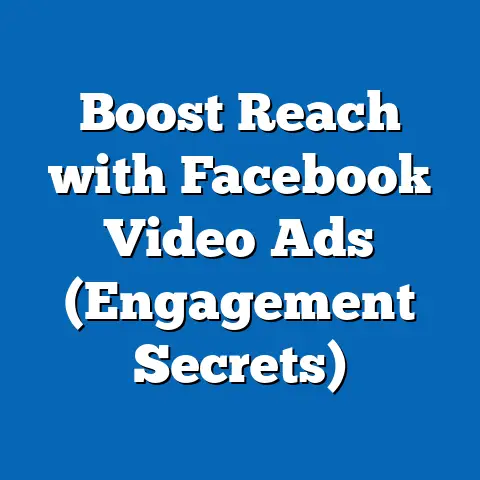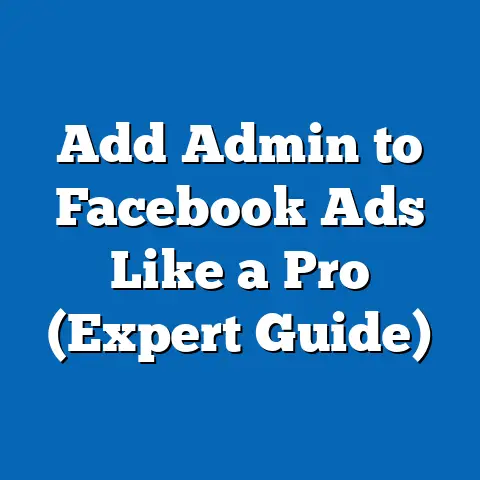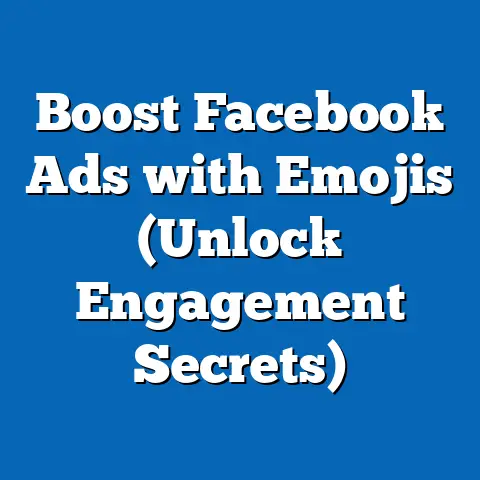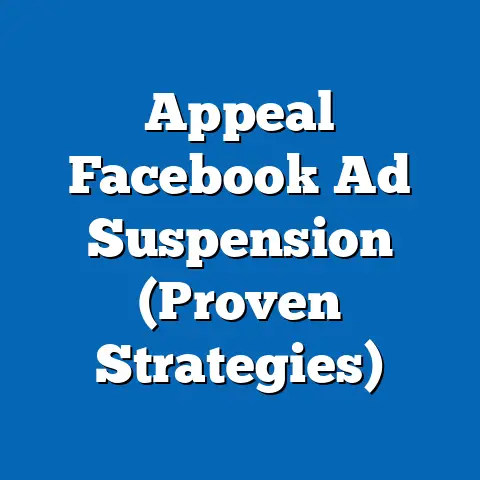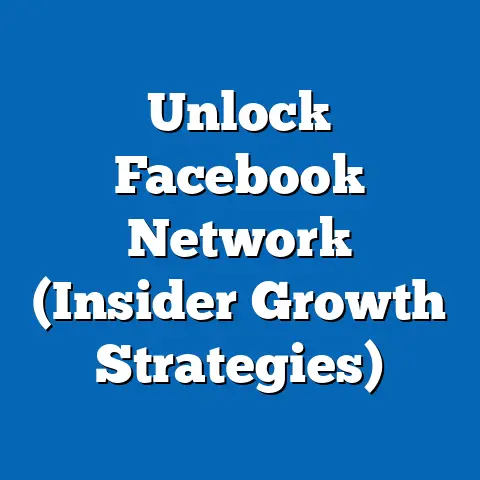Perfect Facebook Ad Dimensions for 2025 (Essential Guide)
Perfect Facebook Ad Dimensions for 2025: An Essential Guide
Imagine a warm, inviting scene: a family gathered around a table, laughter filling the air as they share stories and delicious food. Maybe it’s a birthday celebration, a holiday gathering, or just a simple Sunday dinner. In today’s digital age, these moments are often captured and shared on social media, keeping families connected even when they’re miles apart. I remember when my niece, who was studying abroad, couldn’t make it home for Thanksgiving. Seeing her reaction to the photos and videos we posted on Facebook made her feel like she was right there with us. That’s the power of social media – bridging gaps and strengthening bonds.
Facebook, in particular, has become a virtual family album, a place where we share memories, milestones, and everyday moments. And for businesses, it’s a goldmine of opportunity. Facebook ads act as a bridge, connecting brands with families by showcasing products, services, and experiences that enhance their lives. Think about it: a cozy furniture set for a family room, a vacation package to a kid-friendly resort, or even a subscription box filled with educational toys. These are all things that resonate with families, and Facebook ads can put them right in front of the people who are most likely to be interested.
But here’s the catch: you need to get the visual presentation right. A blurry image, a poorly cropped video, or an awkwardly sized ad can instantly turn off potential customers. That’s why understanding Facebook ad dimensions is so crucial. In this guide, I’m going to walk you through everything you need to know about creating the perfect Facebook ad dimensions for 2025, ensuring that your business can effectively reach and engage family-oriented audiences. We’ll cover everything from image ads to video ads, carousel ads, and more. By the end of this article, you’ll have the knowledge and tools to create visually stunning ads that capture attention and drive results.
Importance of Ad Dimensions
In the dynamic world of Facebook advertising, ad dimensions are more than just technical specifications; they’re the foundation of a successful campaign. Think of it like this: you wouldn’t build a house without a solid foundation, and you shouldn’t launch a Facebook ad without paying close attention to its dimensions.
Why are they so critical? Well, for starters, the right dimensions can dramatically enhance visual appeal. A perfectly sized image or video looks professional and polished, immediately grabbing the viewer’s attention. On the other hand, an improperly sized ad can appear stretched, pixelated, or cropped, making it look unprofessional and untrustworthy. I’ve seen countless ads that were clearly rushed, with images that were either too small or too large, resulting in a distorted and unappealing presentation.
Beyond aesthetics, ad dimensions also have a significant impact on engagement rates. Facebook’s algorithm favors ads that provide a seamless user experience, and that includes displaying correctly across various devices. If your ad is optimized for mobile, for example, it will look great on smartphones and tablets, leading to higher click-through rates and more conversions. Conversely, if your ad is designed for desktop but looks clunky on mobile, you’re likely to lose a large portion of your potential audience.
For family-centric products and services, the impact of properly sized ads is even more profound. Families are often browsing Facebook on the go, using smartphones and tablets to stay connected. They’re looking for products and services that fit seamlessly into their busy lifestyles. A well-designed ad that showcases your product in a visually appealing way can make all the difference.
Let’s say you’re advertising a new line of organic baby food. A high-quality image ad that features a happy, healthy baby enjoying your product can instantly resonate with parents. But if the image is blurry or distorted, it can create a negative impression and make parents question the quality of your product. I’ve personally seen campaigns where simply optimizing the ad dimensions led to a 20-30% increase in engagement and conversions.
Ad dimensions also play a crucial role in shaping brand perception. A professionally designed ad conveys a sense of trustworthiness and credibility, while a poorly designed ad can damage your brand’s reputation. For family-oriented businesses, building trust is paramount. Parents want to know that they’re buying products and services from reputable companies that care about their families’ well-being.
Takeaway: Ad dimensions are not just a technical detail; they’re a critical factor in determining the success of your Facebook advertising campaigns. By paying close attention to dimensions, you can enhance visual appeal, improve engagement rates, and build trust with your target audience, especially when marketing to families.
Overview of Facebook Ad Types
Facebook offers a diverse range of ad types, each with its own unique characteristics and capabilities. Understanding these ad types is essential for crafting effective campaigns that resonate with your target audience. Let’s take a closer look at the most popular options:
-
Image Ads: These are the simplest and most common type of Facebook ad. They consist of a single image, accompanied by text and a call-to-action button. Image ads are great for showcasing products, promoting events, or driving traffic to your website. I’ve found that high-quality images with clear, concise messaging tend to perform the best.
-
Video Ads: Video ads are a powerful way to capture attention and tell a story. They can be used to demonstrate products, share testimonials, or create emotional connections with your audience. Video ads can be short and sweet (15-30 seconds) or longer and more in-depth (up to several minutes). One campaign I ran for a local daycare center used a video ad featuring parents sharing their positive experiences. It was incredibly effective in building trust and driving enrollment.
-
Carousel Ads: Carousel ads allow you to showcase multiple images or videos in a single ad unit. Each image or video has its own headline, description, and link, allowing you to tell a more complete story or highlight multiple products. Carousel ads are particularly effective for e-commerce businesses and brands with a diverse product line.
-
Slideshow Ads: Slideshow ads are similar to video ads, but they’re created using a series of static images. This makes them a cost-effective option for businesses that don’t have the resources to produce high-quality video content. Slideshow ads can be surprisingly engaging, especially when combined with compelling music and transitions.
-
Collection Ads: Collection ads are designed for mobile devices and allow you to showcase a collection of products in a visually appealing layout. When users click on a collection ad, they’re taken to a full-screen experience where they can browse and purchase products directly from Facebook. Collection ads are a great option for e-commerce businesses that want to drive mobile sales.
Image Ads: These are the simplest and most common type of Facebook ad. They consist of a single image, accompanied by text and a call-to-action button. Image ads are great for showcasing products, promoting events, or driving traffic to your website. I’ve found that high-quality images with clear, concise messaging tend to perform the best.
Video Ads: Video ads are a powerful way to capture attention and tell a story. They can be used to demonstrate products, share testimonials, or create emotional connections with your audience. Video ads can be short and sweet (15-30 seconds) or longer and more in-depth (up to several minutes). One campaign I ran for a local daycare center used a video ad featuring parents sharing their positive experiences. It was incredibly effective in building trust and driving enrollment.
Carousel Ads: Carousel ads allow you to showcase multiple images or videos in a single ad unit. Each image or video has its own headline, description, and link, allowing you to tell a more complete story or highlight multiple products. Carousel ads are particularly effective for e-commerce businesses and brands with a diverse product line.
Slideshow Ads: Slideshow ads are similar to video ads, but they’re created using a series of static images. This makes them a cost-effective option for businesses that don’t have the resources to produce high-quality video content. Slideshow ads can be surprisingly engaging, especially when combined with compelling music and transitions.
Collection Ads: Collection ads are designed for mobile devices and allow you to showcase a collection of products in a visually appealing layout. When users click on a collection ad, they’re taken to a full-screen experience where they can browse and purchase products directly from Facebook. Collection ads are a great option for e-commerce businesses that want to drive mobile sales.
When tailoring these ad types to appeal to family demographics, it’s important to focus on the storytelling aspect. Families are drawn to ads that evoke emotions, share relatable experiences, and highlight the benefits of your product or service for their family life. For example, an ad for a family vacation package could feature a video of a family having fun at a resort, with the tagline “Create memories that last a lifetime.”
Takeaway: Facebook offers a variety of ad types, each with its own strengths and weaknesses. By understanding these ad types and tailoring them to appeal to family demographics, you can create compelling campaigns that drive results.
Perfect Dimensions for Each Ad Type
Now, let’s get down to the nitty-gritty: the perfect dimensions for each Facebook ad type in 2025. Keep in mind that these dimensions are subject to change, so it’s always a good idea to double-check Facebook’s official documentation before launching your campaigns. However, based on current trends and industry best practices, here’s what I recommend:
1. Image Ads
Image ads are your bread and butter for quick, impactful messages. For single image ads, aim for these specs:
- Recommended Aspect Ratio: 1.91:1
- Recommended Resolution: At least 1080 x 1080 pixels. I’ve found that slightly higher resolutions (e.g., 1200 x 628 pixels) can sometimes result in sharper images, especially on high-resolution displays.
- Maximum File Size: 30MB
If you’re running multiple image ads in a carousel format, stick to these guidelines:
- Recommended Aspect Ratio: 1:1 (square)
- Recommended Resolution: At least 1080 x 1080 pixels
- Maximum Number of Cards: 10
When showcasing family-friendly products, make sure your images are high quality, well-lit, and feature happy, relatable families. For example, if you’re selling children’s clothing, use images of kids wearing your clothes while playing and having fun.
2. Video Ads
Video ads are where you can really bring your brand to life. Here are the optimal dimensions for video ads:
- Recommended Aspect Ratio: 1:1 (square), 4:5 (vertical), or 16:9 (horizontal)
- Recommended Resolution: At least 1080 x 1080 pixels for square and vertical videos, and 1920 x 1080 pixels for horizontal videos
- Maximum File Size: 4GB
- Maximum Length: 240 minutes
Square and vertical video formats are particularly effective on mobile devices, as they take up more screen space and capture attention more effectively. When showcasing family moments, consider using these formats to create a more immersive experience. Imagine a vertical video ad featuring a family laughing and playing on a beach, with the tagline “Create unforgettable memories with our family vacation packages.”
3. Carousel Ads
Carousel ads are perfect for telling a story or showcasing multiple products. Here are the dimensions you should use:
- Recommended Aspect Ratio: 1:1 (square)
- Recommended Resolution: At least 1080 x 1080 pixels
- Maximum Number of Cards: 10
- Image or Video: Both are supported
Carousel ads can be used to highlight different aspects of a family-related promotion. For example, a carousel ad for a family board game could feature images of the game, testimonials from satisfied customers, and a call-to-action to purchase the game online.
4. Slideshow Ads
Slideshow ads are a great way to create dynamic visual narratives without the need for video production. Here are the recommended dimensions:
- Recommended Aspect Ratio: 16:9 (horizontal), 1:1 (square), or 2:3 (vertical)
- Recommended Resolution: At least 1280 x 720 pixels
- Number of Images: 3-7 images recommended
Slideshow ads can be used to create a compelling story for family-oriented brands. For example, a slideshow ad for a children’s book could feature images of the book’s illustrations, accompanied by narration and music.
5. Collection Ads
Collection ads are designed to showcase a range of products in an attractive layout. Here are the dimensions you should use:
- Recommended Aspect Ratio: 1:1 (square) for the cover image or video, and 1:1 or 1.91:1 for the product images
- Recommended Resolution: At least 1080 x 1080 pixels for the cover image or video, and 1080 x 1080 pixels for the product images
- Number of Products: 4 or more
Collection ads are ideal for displaying a range of products that appeal to family needs. For example, a collection ad for a baby store could feature a range of products, including diapers, clothing, toys, and furniture.
Takeaway: Understanding the specific dimensions required for each Facebook ad type is essential for creating visually stunning ads that capture attention and drive results. By following these guidelines, you can ensure that your ads look their best on all devices and platforms.
Best Practices for Using Dimensions Effectively
Now that you know the perfect dimensions for each ad type, let’s talk about some best practices for using those dimensions effectively. It’s not enough to simply create an ad that meets the technical requirements; you also need to ensure that your images and videos are high quality, well-designed, and relevant to your target audience.
-
Ensure High-Quality Images and Videos: This may seem obvious, but it’s worth repeating: always use high-quality images and videos. A blurry, pixelated, or poorly lit image can instantly turn off potential customers. Invest in professional photography or videography if necessary. I’ve seen businesses try to cut corners by using low-quality images, and it almost always backfires.
-
Maintain Focus on the Subject Matter: Make sure your images and videos are focused on the subject matter. If you’re advertising a family vacation package, feature images of families having fun at a resort. Avoid using generic stock photos that don’t accurately represent your product or service.
-
Test Different Dimensions: Don’t be afraid to experiment with different dimensions and formats. What works for one business may not work for another. Use A/B testing to determine which dimensions and formats resonate best with your target audience. I always recommend testing at least three different versions of each ad to see which one performs the best.
-
Optimize for Mobile: As I mentioned earlier, mobile devices are the primary way that most people access Facebook. Make sure your ads are optimized for mobile, using square or vertical formats when appropriate. Test your ads on different devices to ensure that they look great on smartphones and tablets.
-
Use Compelling Visuals: Your images and videos should be visually compelling and attention-grabbing. Use bright colors, interesting compositions, and engaging storytelling to capture your audience’s attention. I’ve found that ads that evoke emotions tend to perform the best.
-
Consider the Context: Think about the context in which your ads will be displayed. Facebook users are often scrolling through their feeds quickly, so you need to grab their attention in a matter of seconds. Use visuals that are relevant to your target audience and that stand out from the crowd.
Ensure High-Quality Images and Videos: This may seem obvious, but it’s worth repeating: always use high-quality images and videos. A blurry, pixelated, or poorly lit image can instantly turn off potential customers. Invest in professional photography or videography if necessary. I’ve seen businesses try to cut corners by using low-quality images, and it almost always backfires.
Maintain Focus on the Subject Matter: Make sure your images and videos are focused on the subject matter. If you’re advertising a family vacation package, feature images of families having fun at a resort. Avoid using generic stock photos that don’t accurately represent your product or service.
Test Different Dimensions: Don’t be afraid to experiment with different dimensions and formats. What works for one business may not work for another. Use A/B testing to determine which dimensions and formats resonate best with your target audience. I always recommend testing at least three different versions of each ad to see which one performs the best.
Optimize for Mobile: As I mentioned earlier, mobile devices are the primary way that most people access Facebook. Make sure your ads are optimized for mobile, using square or vertical formats when appropriate. Test your ads on different devices to ensure that they look great on smartphones and tablets.
Use Compelling Visuals: Your images and videos should be visually compelling and attention-grabbing. Use bright colors, interesting compositions, and engaging storytelling to capture your audience’s attention. I’ve found that ads that evoke emotions tend to perform the best.
Consider the Context: Think about the context in which your ads will be displayed. Facebook users are often scrolling through their feeds quickly, so you need to grab their attention in a matter of seconds. Use visuals that are relevant to your target audience and that stand out from the crowd.
Takeaway: Utilizing the perfect dimensions is just the first step. By following these best practices, you can create Facebook ads that are not only visually stunning but also highly effective in reaching and engaging your target audience.
Future Trends in Facebook Advertising for Families
The world of Facebook advertising is constantly evolving, and it’s important to stay ahead of the curve. As we look ahead to 2025, here are some emerging trends that may influence dimensions and formats in Facebook advertising for families:
-
Rise of Augmented Reality (AR) Ads: Augmented reality ads allow users to interact with your products in a virtual environment. For example, a furniture store could create an AR ad that allows users to see how a sofa would look in their living room. AR ads are particularly engaging and immersive, and they’re likely to become more popular in the coming years.
-
Increasing Importance of Personalization: Personalization is already a key trend in marketing, and it’s only going to become more important in the future. Facebook allows you to target ads to specific demographics, interests, and behaviors. By personalizing your ads to appeal to individual families, you can increase engagement and conversions.
-
Emphasis on Video Content: Video content is already king, and it’s likely to remain so in the future. Facebook users are increasingly consuming video content on their mobile devices, so it’s important to create video ads that are optimized for mobile viewing.
-
Focus on User-Generated Content: User-generated content (UGC) is a powerful way to build trust and credibility with your audience. Encourage your customers to share their experiences with your products or services on Facebook, and then use that content in your ads.
-
Integration of E-commerce: Facebook is increasingly integrating e-commerce features into its platform, making it easier for users to purchase products directly from Facebook. In the future, we’re likely to see more collection ads and other e-commerce-focused ad formats.
Rise of Augmented Reality (AR) Ads: Augmented reality ads allow users to interact with your products in a virtual environment. For example, a furniture store could create an AR ad that allows users to see how a sofa would look in their living room. AR ads are particularly engaging and immersive, and they’re likely to become more popular in the coming years.
Increasing Importance of Personalization: Personalization is already a key trend in marketing, and it’s only going to become more important in the future. Facebook allows you to target ads to specific demographics, interests, and behaviors. By personalizing your ads to appeal to individual families, you can increase engagement and conversions.
Emphasis on Video Content: Video content is already king, and it’s likely to remain so in the future. Facebook users are increasingly consuming video content on their mobile devices, so it’s important to create video ads that are optimized for mobile viewing.
Focus on User-Generated Content: User-generated content (UGC) is a powerful way to build trust and credibility with your audience. Encourage your customers to share their experiences with your products or services on Facebook, and then use that content in your ads.
Integration of E-commerce: Facebook is increasingly integrating e-commerce features into its platform, making it easier for users to purchase products directly from Facebook. In the future, we’re likely to see more collection ads and other e-commerce-focused ad formats.
These trends can significantly impact how you approach Facebook advertising for families. For instance, augmented reality ads might require different dimension considerations to ensure optimal interaction. The push for personalization could mean tailoring ad visuals to specific family demographics within your target audience.
Takeaway: Staying informed about emerging trends in Facebook advertising is crucial for staying competitive and reaching your target audience effectively. By embracing new technologies and approaches, you can create more engaging and impactful campaigns that drive results.
Conclusion
In conclusion, mastering Facebook ad dimensions is not just about adhering to technical specifications; it’s about understanding how to create visually compelling stories that resonate with your target audience. By using the correct ad dimensions, you can ensure that your ads look their best on all devices and platforms, capturing attention and driving engagement.
Understanding these dimensions is not just about technical specifications but is also about creating meaningful connections with families through compelling visual storytelling. The right visuals can evoke emotions, share relatable experiences, and highlight the benefits of your product or service for their family life.
As you move forward, remember that the landscape of Facebook advertising is constantly evolving. Stay informed about emerging trends, test different approaches, and always prioritize the user experience. By doing so, you can create Facebook ad campaigns that not only meet the technical requirements but also connect with families on a deeper level, building trust and driving long-term success.
I encourage you to stay informed as dimensions and trends evolve in the dynamic landscape of Facebook advertising. Regularly check Facebook’s official documentation and industry blogs for the latest updates and best practices.
Now, I’d love to hear from you. What are your experiences with Facebook ads? What dimensions and formats have you found to be most effective for reaching family audiences? Share your thoughts and insights in the comments below! How do you plan to utilize the information provided in your own advertising strategies for family-focused campaigns? Let’s learn from each other and create even more impactful Facebook ad campaigns.

